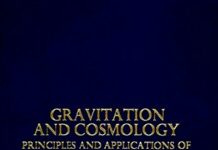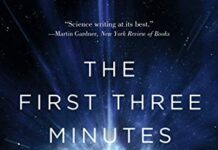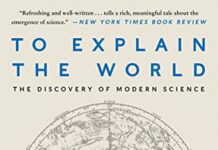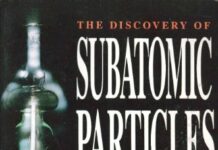
Ebook Info
- Published: 2005
- Number of pages: 445 pages
- Format: PDF
- File Size: 15.42 MB
- Authors: Steven Weinberg
Description
In this third volume of The Quantum Theory of Fields, available for the first time in paperback, Nobel Laureate Steven Weinberg continues his masterly exposition of quantum field theory. This volume presents a self-contained, up-to-date and comprehensive introduction to supersymmetry, a highly active area of theoretical physics. The text introduces and explains a broad range of topics, including supersymmetric algebras, supersymmetric field theories, extended supersymmetry, supergraphs, non-perturbative results, theories of supersymmetry in higher dimensions, and supergravity. A thorough review is given of the phenomenological implications of supersymmetry, including theories of both gauge and gravitationally-mediated supersymmetry breaking. Also provided is an introduction to mathematical techniques, based on holomorphy and duality, that have proved so fruitful in recent developments. This book contains much material not found in other books on supersymmetry, including previously unpublished results. Exercises are included.
User’s Reviews
Reviews from Amazon users which were colected at the time this book was published on the website:
⭐Only recommended if one has a working knowledge of quantum field theory. A Ph D degree or advanced graduate students in theoretical physics is a minimum requirement for this book. I recommend that one works thru the first two volumes of the author’s series first.
⭐satisfactory
⭐Excellent book
⭐The whole current production run of this book has a defect. A glue is bleeding through on the inside of the hard cover fold, front and back. This does not seem to affect the structural quality of the book and is not visible from the outside. If you need this book and get it with this defect, don’t bother trying to exchange it.
⭐Finding good introductions to supersymmetry can be difficult. Most introductions concentrate on N=1 supersymmetry in four dimensions, and there the superfield forumlation can be useful. However, when you go to N=2 supersymmetry (e.g. when considering theories in five or more dimensions), component fields can be better. Many times it’s a matter of taste. For those cases, you have to go to review articles. Anyway, Weinberg concentrates on N=1 4D supersymmetry and supergravity using the superfield formalism. However, he ventures into the N=2 strong-weak coupling results of Seiberg and Witten, which are now a fundamental part of (supersymmetric) field theory. The text is, as the previous volumes are, a fantastic resource for learning the subject, and as a reference (for things like gravity- and gauge-mediated supersymmetry breaking, as well as the minimal supersymmetric standard model, which are open areas of reserach). As for all modern areas of research, the body of knowledge is stacked higher every year; but the topics covered here stand as solid fundamentals of supersymmetry. For more advanced topics, one is forced to go to the recent literature.
⭐If the two first volumes of “The Quantum Theory of Fields” were considered masterpieces in a modern and original presentation of the basics of quantum field theory and its penetration in the recent development of particle physics, with the machinery of spontaneously broken gauge theories, the new volume embraces the wide subject of supersymmetry in Weinberg’s typical style, which always means a self-contained treatment of the subject, from its foundations and motivations, to its most recent application as a possible scenario for new physics beyond the Standard Model.A complete review is published in CERN Courier, May 2000
⭐This is not a book that I feel entitled to review, as far as the content should be considered. It is very specialistic, since it deals with Supersymmetry, a kind of Quantum Field Theory which is still speculative and may still end up being not representative of the real world. Weinberg with this volume completes a series, after Foundations and Modern Applications; it leaves one wondering whether SUSY is truly in Weinberg’s opinion a realistic theory, or he just felt he had to arrange somehow a trilogy.As usual Amazon service was impeccable.
⭐If the two first volumes of “The Quantum Theory of Fields” were considered masterpieces in a modern and original presentation of the basics of quantum field theory and its penetration in the recent development of particle physics, with the machinery of spontaneously broken gauge theories, the new volume embraces the wide subject of supersymmetry in Weinberg’s typical style, which always means a self-contained treatment of the subject, from its foundations and motivations, to its most recent application as a possible scenario for new physics beyond the Standard Model.A complete review is published in CERN Courier, May 2000
⭐Venía maltratado de una esquina. Supongo que es por el proceso de importación, pero deberían tener más cuidado. Aún así ya me lo quedaré.Qualità della carta e della stampa pessima. Consiglio la versione originale, anche se con il testo un po’ più sbiadito, ma molto più leggibile! Attenzione, questa è la ristampa AMAZON.Everyone who want to know anything about Quantum Field Theory should read and study this book, it is extremely detailed and rigorous, perfect
Keywords
Free Download The Quantum Theory of Fields: Volume 3, Supersymmetry in PDF format
The Quantum Theory of Fields: Volume 3, Supersymmetry PDF Free Download
Download The Quantum Theory of Fields: Volume 3, Supersymmetry 2005 PDF Free
The Quantum Theory of Fields: Volume 3, Supersymmetry 2005 PDF Free Download
Download The Quantum Theory of Fields: Volume 3, Supersymmetry PDF
Free Download Ebook The Quantum Theory of Fields: Volume 3, Supersymmetry




